

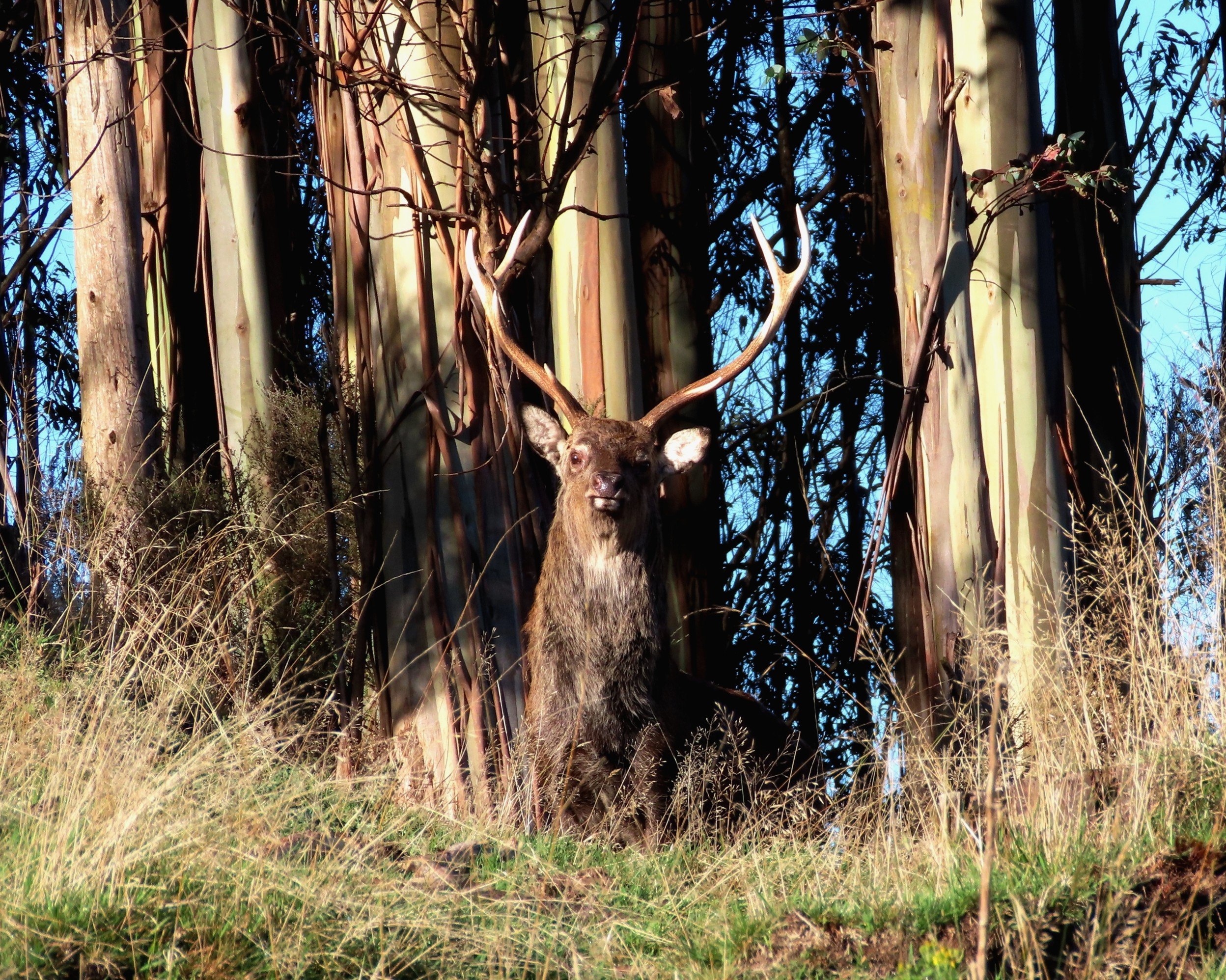
Hunting Experiences
14 August 2023
All hunting clients who visit Poronui will at some stage of their trophy quest find themselves hunting within or alongside a stand of eucalyptus trees. These distinctive gums provide cover for all the game animals that live on the property. The trees were planted in the 1990’s, a time when New Zealand was anxiously looking for a source of short fibre timber for paper production. The bulk of the trees have now gone from Poronui, but large islands of permanent eucalyptus forest were retained as cover habitat for the sika population.
Within the hunting estate there are three large stands of these tall, straight trees. One block is at the northern end, the second block is located in the middle gorge section while another large stand of trees is found at the southern end forming an eastern border with sika gully. Outside of the estate there are also several islands of gums on the flats where wintering free-range sika stags congregate in close proximity to farmland. All of these exotic forest blocks hold large concentrations of deer and during the rut a lot of top trophies will be found within or close to the trees. Red stags in particular like resting in a boys group in the gums.
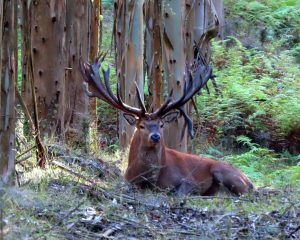
Deer select the gums to live in because they provide shelter, refuge, food and above all else provide a safe habitat which meets all of their yearly needs. The gum tree plantations are where the herds live and rut; it is a hidden away place to rear young and avoid hunters; a shady place to rest in summer, and a warm place to survive the worst of winter. The role of the gum trees cannot be underestimated from a Poronui hunting point of view. Wherever the gums are, there are good numbers of deer and more importantly good numbers of trophy animals.
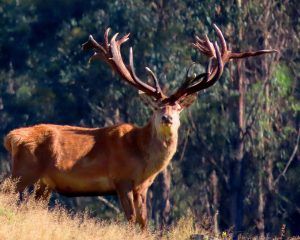
Hunting in the gums is no easy beat task. Herds live in the gums daily so there are a lot of wary deer watching for intruders, smelling the breeze, and listening for unusual noise. Gum trees also shed bark and leaves constantly so stalking quietly is virtually impossible because of the ground litter. There is a lot of constant noise in a gum forest as well with bark strips flapping in the breeze so hearing deer moving is difficult.
The grey/brown colour of the gum trees, and large number of tree lanes also provides excellent camouflage for resident deer, and makes it easy for sika stags in particular to merge in and peek unseen around trees. Sighting your quarry before it sights you is a major challenge.
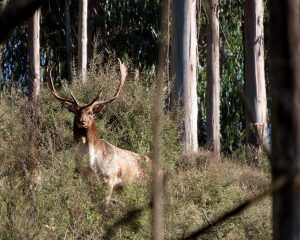
The most successful trophy hunting tactics concerning the gum tree locations are
Successful hunters try to get stags and bucks to come to them, or stalk in on stags and bucks in rutting mode. Waiting and watching is better than walking. Within the trees hunters need to move slowly, have the breeze in their face, and glass ahead regularly. Should you spook a herd in the gum trees then the hunt is probably over for the day. Often they flee out of the gum trees and run for some distance. This is particularly true of free-range sika stags.
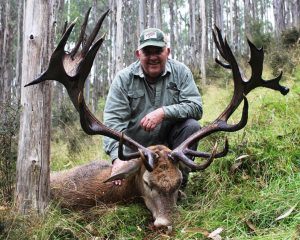
Most trophy hunting success occurs on the fringes between the trees and the open free country. Hunters either select a watching lookout, an ambush location or stalk slowly along the edge of the gum trees. Hunting early and late is best. It is a time when animals leave the gum trees to graze and during the rut the males will emerge from cover following feeding females. If you look at many of the hunting success photographs on the Poronui Facebook site you will often see gum trees in the background. That is no coincidence.
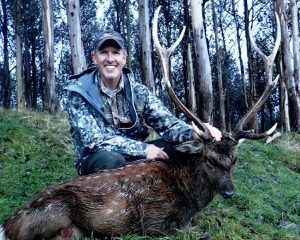
Want to ask a question about Poronui, personalise your vacation with bespoke itinerary options or find out about available dates?
Simply fill in your name and contact email address with a short message and we will get back to you.